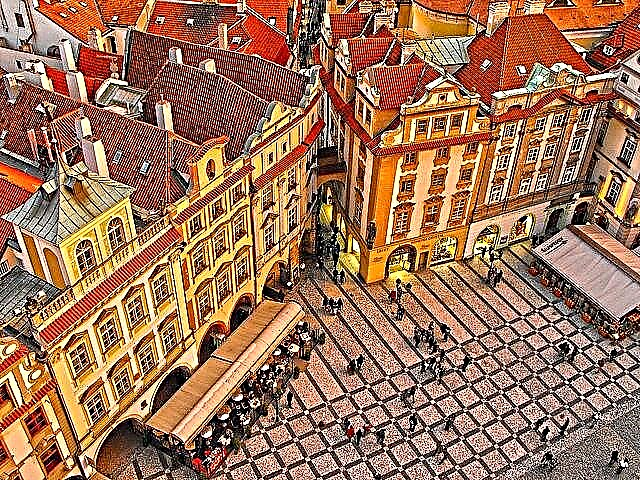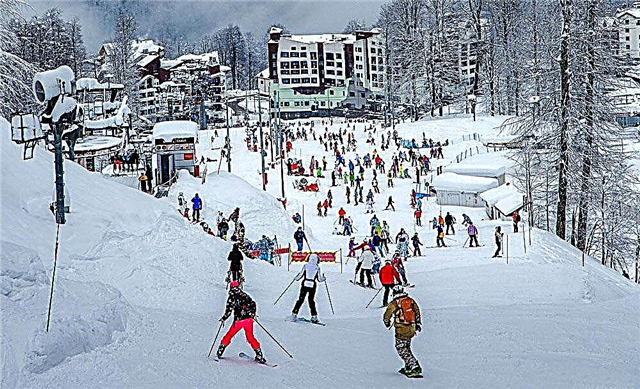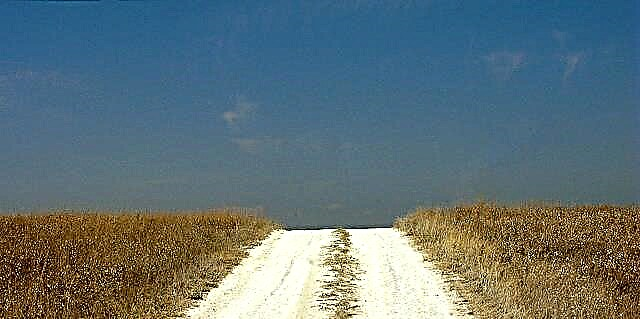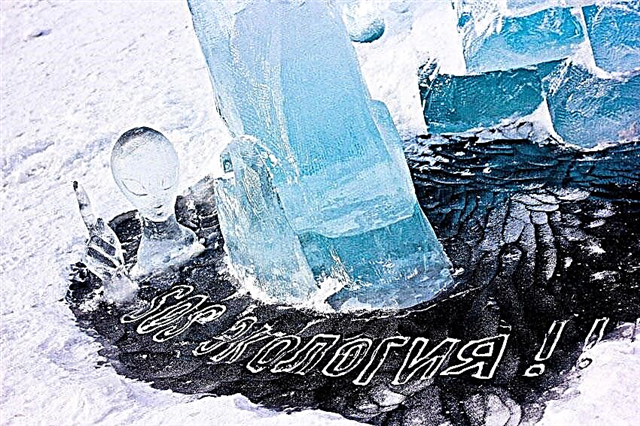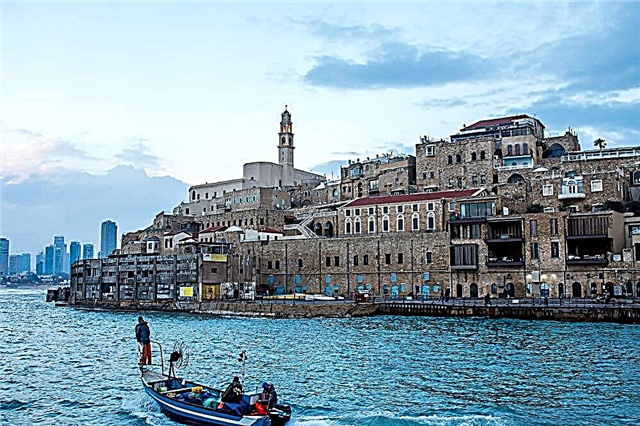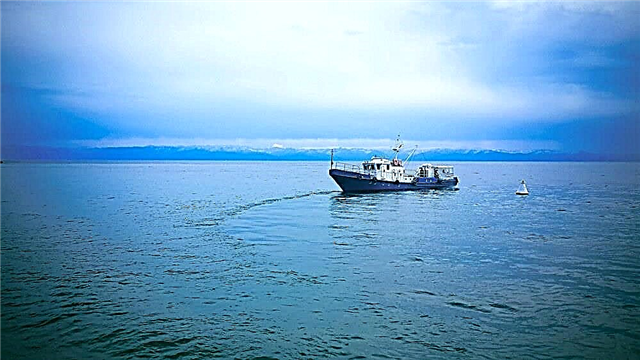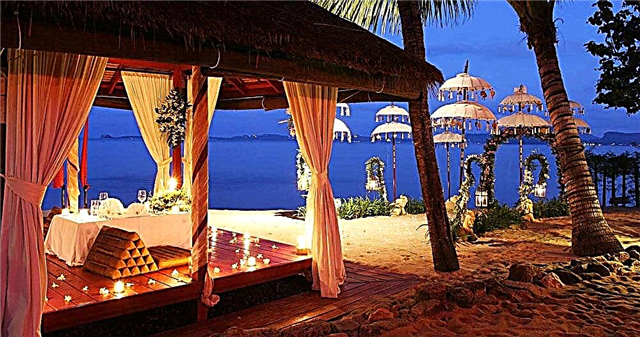The history of Feodosia began many centuries ago. Several of its surviving towers, built in the XIV century, are located in different parts of the city. The places around the towers are imbued with the spirit of the Middle Ages. Many religious buildings have survived since medieval times - the Vvedenskaya Church, the Surb Sarkis Church, the Mufti-Jami Mosque, the Temple of the Iveron Icon of the Mother of God.
Many places in Feodosia are associated with the name of the marine painter Ivan Aivazovsky. The picture gallery, named after him, houses a large collection of the artist's canvases. In honor of Aivazovsky, two fountains have been opened in the city. The name of the popular mountain Mitradit among tourists was also given by Ivan Konstantinovich, in honor of the mountain of the same name in the city of Kerch. The artist's grave is also located in Feodosia, on the territory of the temple.
The most interesting and beautiful places
List, photos with names and descriptions of the best attractions in Feodosia. He will help you plan routes to explore the top places of the city in 2-3 days.
Genoese fortress Kafa
Medieval fortification, erected in the XIV on the shore of the bay. Most of the structures of the fortress were dismantled in the 19th century and to date, about half a kilometer of walls, several towers, Turkish baths, a bridge and Armenian churches have been preserved. Access to the fortress is free and tourists often come here both independently and with a guide. The walls offer a wonderful view of the city.

Paratroopers Embankment
The spacious and wide promenade area of the embankment with a length of 900 meters has long become a popular place for a leisurely rest by the water. Observation balconies with a view of the Feodosiya Gulf have been arranged, the Lovers fountain has been erected. The continuation of the Desantnikov embankment is the Chernomorskaya embankment with a length of 1.3 km, on which there are many entertainment venues, restaurants, and souvenir shops.

Mount Mithridates
One of the highest points of Feodosia is located near the seaport. Walking up the mountain will not take much time, but it will give you many unforgettable impressions. The height of the mountain is 55 meters, from its top there is a wonderful view of the bay, the Kerch Peninsula, the mountains and the steppe, as well as the city itself - the port square, the ruins of fortresses, the Mufti Jami mosque. The name of the mountain was given by a native of Feodosia - marine painter Aivazovsky.

Cottage Stamboli
One of the most popular and recognizable sights of the city. Located on the paratroopers embankment, surrounded by slender cypresses. The dacha was built at the beginning of the 20th century by the project of the architect Wegener. The unusual appearance of the building in the Spanish-Moorish style gives the surrounding area an oriental flavor. Several types of marble and precious woods have been used in the interior decoration.

Art Gallery named after I.K.Aivazovsky
Museum of painting dedicated to the sea. Opened in 1845. On Galereinaya Street, there are two of its buildings, which contain about 11,000 works of art. Here is a large collection of paintings by Aivazovsky - more than 400 paintings. There are exhibitions of graphics, arts and crafts. Separate exhibitions are devoted to the life of the famous marine painter. His personal belongings, documents, photographs are on display.

Feodosia Museum of Antiquities
The Museum of Local Lore was opened in 1811 - it is one of the oldest museums not only in Russia, but also in Europe. More than 80,000 exhibits are devoted to the history of the region since ancient times, as well as to its nature and peoples living in the southeastern Crimea. Archaeological finds from the Paleolithic and Neolithic times occupy two museum halls. A separate hall is dedicated to the life of the region during the Great Patriotic War.

Vvedenskaya church
Located near the port of Feodosia. It is considered the oldest church in Feodosia. The date of its foundation dates back to the VIII-IX centuries. For several centuries, the appearance of the church has undergone a number of changes. It got its modern look in the 19th century. Then the building of the church in the Byzantine style was significantly increased due to an extension, a white-stone bell tower was erected next to it. The old painting was destroyed by the Bolsheviks, a new one appeared already in the 21st century.

Fountain "Good Genius"
The memorial fountain was installed in the Jubilee Park in 2004. It is dedicated to the native of the city - the famous artist Ivan Aivazovsky. The modern fountain is a replica of a 19th century fountain. Then it was erected in memory of the rich gift of Aivazovsky to the city, which was in poverty from lack of water. The artist gave the Subash source to Feodosia. On the pedestal of the fountain there is a female sculpture pouring water into a stone bowl.

Feodosia Dolphinarium "Nemo"
Located on the Kerch highway, on the outskirts of the city. The show features bottlenose dolphins and sea lions. Under the guidance of experienced trainers, maritime artists perform complex tricks, jump out of the water, dance, play ball. After the show, guests can use interesting services - take photos with animals, swim with dolphins, listen to a lecture on the life of marine mammals.

Grave of I. Aivazovsky
Located at the entrance to the Church of St. Sergius. It was in this church that the famous artist was baptized, crowned and buried. An honorable place for a grave on the territory of the temple was allocated in recognition of Aivazovsky's services to the city. In 1903, a marble tombstone was erected on the grave, which was designed by the Italian sculptor Biojoli. The sarcophagus made of a single piece of marble became the basis of the memorial complex.

Architectural landmarks of Feodosia
The famous Feodosia dachas can be called the main architectural decoration of the embankment. Among the ancient objects, historical fountains deserve attention.
Dacha "Milos"
An architectural heritage site of culture on the paratroopers embankment. Outwardly, it resembles a beautiful structure of ancient times - the facade is decorated with columns, sculptures of statues, graceful marble fountains are located in the courtyard. In the rotunda gazebo at the corner of the terrace there is a statue of Venus de Milo, after which the dacha is named. Currently, the building houses the building of the Voskhod sanatorium.

Cottage "Victoria"
Built at the beginning of the 20th century for the representative of the Crimea dynasty - Salomon Samuilovich. The architectural complex includes two buildings - the main one and the guest one, as well as several small buildings. The cottage was built in an interesting style that imitates the Spanish-Moorish architecture of the Middle Ages. The magnificent facade is decorated with a large number of stucco moldings, decorative carved elements. It is located next to the Milos cottage.

Aivazovsky fountain
The construction of the fountain was financed by Aivazovsky. It was opened in 1888 in Jubilee Park. The townspeople of Feodosia, suffering from a lack of drinking water, especially appreciated the fact that water from the fountain could be drunk for free. The appearance of the water source is a copy of the fountain in Constantinople, with a hinged roof installed above it. Aivazovsky himself admired his appearance in the oriental style and proportions.

Armenian fountain
It is located at the foot of the most popular mountain among tourists, Mithridates. Nearby is the Armenian Church of the Holy Archangels Michael and Gabril. It is believed that the fountain was built in the XIV or XV century by the Armenians who lived in Feodosia. It is made in the form of a prism; rubble stone was used in the construction. A commemorative marble slab is placed above the water cannon; a pointed arch is made on the eastern side of the fountain.

Tower "White Pool"
A railway water tower, which, like a hundred and 100 years ago, stores water for refueling locomotives. The beautiful snow-white tower looks incredibly picturesque and does not look at all like a monument of industrial architecture. It has an octagonal shape with narrow windows.It is located on the Sarygol Upland and at the time of construction was the tallest building in the city.

Ilyinsky lighthouse
Located at Cape St. Elijah, which makes it difficult for ships sailing from the west to enter the Feodosiya Gulf. For the safety of ships, a lighthouse was built on the cape in 1899. The construction was carried out at the expense of Evdokia Rukavishnikova, a memorial plaque was installed in her honor on the territory of the lighthouse. Despite some distance from the main tourist routes, the lighthouse is often visited by tourists - for the sake of beautiful views of the endless sea.

The best museums of Feodosia
The most interesting museums in the city, which are definitely worth visiting.
Alexander Green Museum
The Literary Memorial Museum is one of the most visited in Feodosia. It was founded in 1966 in the house where the writer lived from 1924 to 1929. In it, he wrote several of his popular stories, including "Jesse and Morgiana" and "Waves Runner." The expositions of the museum recreate the environment of Green's life, his study. Some of the premises are decorated in the style of his works - there is the Wandering Cabin, the Hold of the frigate.

Museum of Marina and Anastasia Tsvetaev
It was opened in the house where Anastasia, the younger sister of Marina Tsvetaeva, lived from 1913 to 1914. The poetess herself lived in a neighboring house. The expositions of the museum acquaint visitors with a short period of the life of the sisters in Feodosia. Marina and Anastasia loved this city, called it magical. A separate exhibition is dedicated to Tsvetaeva's stay in Koktebel, where she met Sergei Efron, her future husband.

Museum of the sculptor Vera Mukhina
The Historical Museum is dedicated to the youth and childhood of the sculptor Mukhina. This place once housed the house of the Mukhin family, of which only one wall remained. The surviving fragment of the old house fits well into the facade of the modern building. Through the exhibits of the museum, one can trace the development of Mukhina's talent, learn about her creative path and study abroad, study drawings and sketches. In total, the museum has more than 200 exhibits.

Feodosia Museum of Money
Created on the initiative of the numismatist Oleshchuk in 2003. It contains a large collection of coins and paper banknotes that were in circulation on the territory of Crimea and Feodosia from ancient times to the present. There are both original samples and quality replicas. In total, the museum contains about 30,000 coins and 1,000 paper banknotes. The exposition of the funds of ancient Feodosia is the largest in the world.

Hang gliding museum
Located next to the money museum near the train station. Visitors to the museum will learn interesting facts from the history of the formation of hang gliding from the time of Icarus to the present, see models of hang gliders, get acquainted with their use in different spheres of life - from aerial reconnaissance to rescue vehicles. A special delight for adults and children is the ability to fly on a paraglider simulator.

Cult places of Feodosia
The most famous religious sites in the city. They belong to different religions. Temples and mosques are interesting for their history and medieval architecture.
Surb Sarkis Church
Armenian church at the foot of Mount Mithridates. Built in medieval times, the date of its foundation dates back to the XIV century. The church was rebuilt and completed several times, so its internal plan is complex and consists of rooms of different sizes and heights. Above the entrance to the church, there are Armenian crosses; next to it, there is a memorial plaque in honor of Aivazovsky, who donated a large sum for the restoration of the temple after the fire.

Temple of the Iberian Icon of the Mother of God
Built in the XIII-XIV centuries at the Genoese fortress as an Armenian church. Today it is an Orthodox church. The church consists of two parts, built at different times. In its old part, loopholes under the dome have been preserved. The late extension is much lower and extended in length. Khachkars at the entrance, several ancient tombstones of the Armenian cemetery, fragments of paintings on the inner walls have been preserved since the time of the Armenian church.

Mufti Jami Mosque
Cathedral mosque on Karaimskaya street. Built at the beginning of the 17th century by the Turks of Feodosia. It has features inherent in traditional Islamic architecture, as the medieval mosques of Istanbul were taken as a model. The base is a cubic building made of rubble stone and bricks, next to it there is a high octahedral minaret. The mosque has three entrances - from the east, west and north. From the 18th century to the beginning of the 20th century, the building belonged to the Armenian church.

Church of St. George
Another medieval temple that makes up the historical architectural pride of Feodosia. The church was built in 1385. Located on Nakhimov Street near the Genoese Fortress. Initially, it was the Armenian Church of St. George. The building has a typical appearance for the Armenian-Gregorian style. In the 19th century, two more parts and a dome were added to the building. Due to the reconstruction, the church has a very peculiar appearance.

Church of St. Catherine
Located on the Black Sea embankment. The construction of the church was carried out on donations from citizens and with their active participation in the construction. The laying of the first stone took place on the birthday of Empress Catherine II in 1892. The appearance of the church is made according to all the canons of ancient Russian architecture. It has a cruciform appearance, its upper part is surrounded by beautiful kokoshniks, a portico with a bell tower is located above the entrance.

Kazan Cathedral
It is considered the main temple of the city. It is located in its central part and hundreds of parishioners come to it on religious holidays. The cathedral was built in the Russian-Byzantine style at the beginning of the 20th century by the architect Keil. The cathedral looks light and airy thanks to the semicircular shapes of the walls and columns at the corners. Its walls have a pleasant light color, the dome is covered with gilding, the walls inside are decorated with paintings.

Temple of Archangels Michael and Gabriel
The currently defunct Armenian church was built in the 15th century. It is located next to the Surb Sarkis Church. It is a cultural heritage site as an example of medieval Armenian architecture. The appearance of the temple has features of the Romanesque style, it is crowned with a dome, and the belfry is decorated with carvings. Several fragments of indoor frescoes have survived since ancient times, as well as a part of the old tiled floor.

Gardens and parks of Feodosia
Beautiful and quiet green outdoor recreation areas. Here you can walk along the shady alleys and sit on a bench.
Jubilee park
One of the most favorite places for city residents and guests to spend their leisure time. Here pedestrian alleys are laid in the shade of centuries-old trees, large and beautiful flower beds are laid out. The park is located in the center of the city, it contains many iconic sights of the city, so there are always many visitors here. There is an amusement zone for children, and festive events are held on the dance floor.

Komsomolsky park
The park was created by the efforts of young people many years ago on the site of an abandoned wasteland not far from the city center and the beach. It was already equipped with an unusual playground in the style of the ruins of an ancient settlement, the stage was made in the form of the Colosseum. By now, benches, cafes and attractions have appeared in the park. Tourists are happy to visit the cozy park to wait out the heat in it, and in the evenings they often hold fire shows.

Plane alley
Located on Gorky Street in the historic part of the city. Part of it is raised to a dais; there is a memorial complex called the Alley of Heroes. There are busts of heroes of the Great Patriotic War and the Crimean War. Lush crowns of plane trees that have been growing for several decades frame the portraits of the dead Theodosians. In 2006, a monument to the Knights of the Deep Sea was erected on the alley.

The best beaches of Feodosia
Feodosia is interesting as a resort town. There are beautiful landscaped beaches where you can sunbathe in sun loungers or relax in a cafe.
"Golden Beach"
A popular beach among vacationers, located next to the base of the same name. It will stretch 3 km from Feodosia to the village of Beregovoe. Directly at the camp site there is a gentle entrance to the water, the depth here is small for the first 15 meters, which is perfect for vacationers with children. The shore is covered with soft golden sand, which you can walk on barefoot. For a comfortable stay, there is all the necessary beach infrastructure.

The first city beach
Among vacationers it is known as "Children's Beach". It has a small size - 350 * 50 meters. Shallow water, the absence of large waves and gentle descent into the water is its main advantage for families with small children and people who cannot swim. The coast is covered with sand mixed with shell rock. There are changing cabins, showers, toilets, sun loungers and points with drinks and snacks.

Central beach "Kameshki"
Located in the very center of the resort area, the beach has a developed infrastructure and offers guests different types of entertainment. Its length is about 600 meters, and its width is no more than 40 meters. The shore is covered with pebbles, and the bottom is covered with sand. You can rent sun loungers, umbrellas, sports equipment. Among the popular water activities are riding catamarans, jet skis, "bananas".
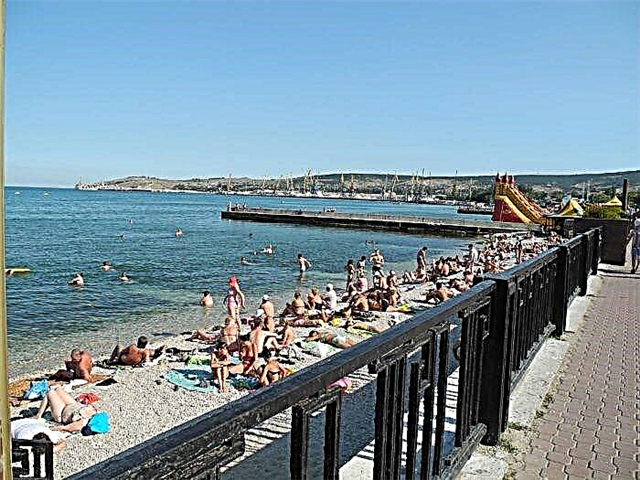
Monuments and monuments of Feodosia
The most famous historical and modern monuments of the city.
Monument to Afanasy Nikitin
The monument to the famous merchant traveler was erected in 2008. It is located near the Iberian Church, which Nikitin visited. In 1474, after a trip to India, Nikitin lived for several months in the Cafe; it is believed that he wrote most of his "Voyage across the Three Seas" here. The sculpture is 3.2 meters high. The sculptor depicted a merchant in national dress - a shirt and caftan, his worn boots on his feet.

Monument to Vitya Korobkov
The memorial sculptural composition is dedicated to the young pioneer partisan. During the occupation of Feodosia, Vitya Korobkov, together with his father, performed tasks of partisan groups, but in 1944 they were arrested and, after two weeks of torture, were shot. The monument to the young hero was erected in 1959. Viti's mother was present at the opening ceremony. Architect Kupriyanov and sculptor Podolsky worked on the monument.

Monument to Alexander Pushkin
The great poet visited Feodosia only once - in 1820, traveling with General Ranevsky. He stayed in the city for two days. In 1974, in honor of this event, a monument was erected in Pushkin Square. The 2.5-meter-high bronze figure of the poet is on a 2-meter granite pedestal. The statue of the poet faces the sea, the beauty of which delighted him so much. His face is thoughtful and serious. The authors of the monument are Grigoriev and Naugolny.

"Fountain of Love"
Also known as Under the Umbrella or Monument to Lovers. A sculpture of a young man and a girl hugging each other under one umbrella for two is installed in the center of the fountain on Zemskaya Street. Many couples in love seek him to take a romantic photo at the symbolic sculpture. A little further than the fountain, interesting art objects have been installed that continue the theme of love - a bench of reconciliation and a bench of kisses.

Monument to the Feodosia landing
Installed near the railway station on the paratroopers embankment. The monument depicts an infantryman repelling an enemy attack and a sailor with a signal flag in his hand. The memorial sculpture was created in honor of the heroism and courage of the soldiers during the Kerch-Feodosia landing military operation, which lasted from December 29, 1941 to January 2, 1942, which led to the enemy's retreat from Feodosia.

The surviving towers of ancient Kafa
The surviving towers have varying degrees of preservation. These are not the most popular tourist destinations. They have more cultural and historical value.
Dock tower
The surviving tower of the Genoese fortress, protecting the city from invasions from the east and serving as the city's sea gate. She stands on the seashore in Quarantine. It is assumed that a shipyard was located in this place, where ships were repaired and built. You can inspect the tower from the Quarantine Hill - from here it looks beautiful against the background of the sea, here you can clearly see the Feodosia port and the preserved walls of the citadel.

Giovanni di Scaffa tower
Located at the crossroads of Bashennaya and Tatarskaya streets. The name was given in honor of the Genoese consul who ruled the citadel in the XIV century. The tower was of great strategic importance, protecting the fortress from enemy attacks from the southeast. Local residents believe that an underground passage led from the tower to the fortress. Only ruins remained of the tower. The lower two tiers of the majestic ruins are covered with earth; only the third tier can be viewed.

St. Constantine Tower
It is located in the northern part of the fortress - now it is the territory of the Yubileiny park. The name of the tower is given in honor of the Roman emperor Constantine, who made Christianity the official religion. The walls of the fortress with five gates, which were guarded by guards, departed from the tower. Three walls of the tower survived, many scientists believe that the fourth wall was not at all, so that the soldiers had where to retreat and not be trapped.

Thomas Tower
The square stone tower had three tiers and in the XIV century served as an arsenal and a place for storing food. Remains of the bastion at the base of the tower have survived to this day. The tower, named after St. Thomas, is located on Mount Mithridates, on Seismicheskaya Street. Even the ruins of the tower leave an impressive impression - the thickness of the ancient walls, their massiveness and inaccessibility are striking.
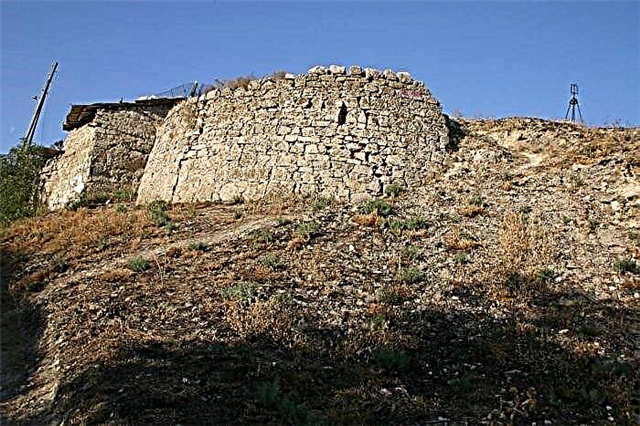
Where to go near Feodosia?
In the vicinity of the city, as well as throughout the peninsula, there are many beautiful and interesting places. We recommend visiting the Kara-Dag mountain reserve and the stunning Taigan park.
Karadag nature reserve
Located on the territory of the extinct volcano Kara-Dag, 25 km from Feodosia. Three tourist excursion eco-routes have been laid for visitors around the reserve. There is a museum of history and nature of Karadag, with an extensive exposition of 600 exhibits. Near the coast of the reserve there is an unusual-looking rock in the form of an arch - "Golden Gate". It is believed that the one who sailed under the arch will have a cherished wish.

Park of lions "Taigan"
Safari park in Belogorsk, 75 km from Feodosia. The park is located in a picturesque place near the Taigan reservoir. About 60 lions live in the park, but there are also other animals - yaks, bison, giraffes. In total, representatives of 83 species of animals can be seen in the park. They live in large spaces that are not enclosed by trellises. For visitors over the territory of the park there are observation bridges with a length of 1 km.



